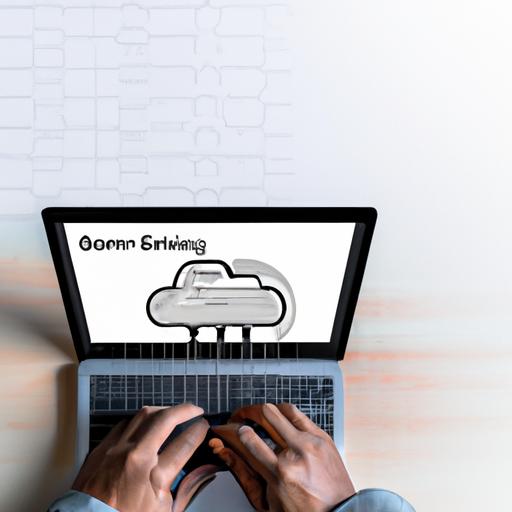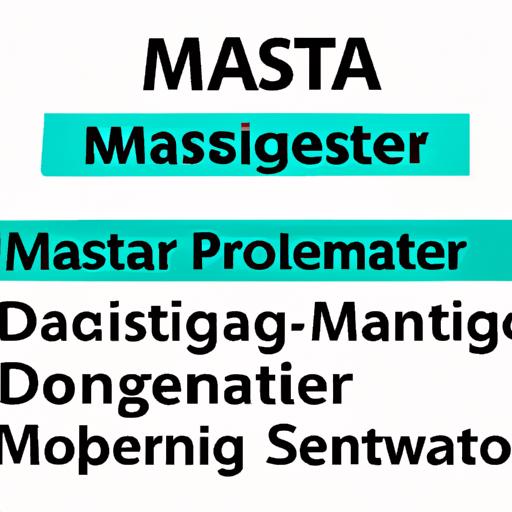In today’s rapidly evolving healthcare landscape, efficient asset management is crucial for ensuring smooth operations and delivering quality patient care. With the increasing complexity of healthcare facilities, managing and tracking assets such as medical equipment, supplies, and devices can be a daunting task. However, the advent of asset management software has revolutionized the healthcare industry by providing comprehensive solutions to streamline inventory management, enhance regulatory compliance, and optimize operational efficiency.
Overview of Asset Management Software for Healthcare
Asset management software for healthcare is a digital solution designed to simplify the management and tracking of assets within healthcare facilities. It offers a centralized platform that allows healthcare providers to efficiently monitor, maintain, and optimize their asset inventory. From tracking equipment utilization and maintenance schedules to automating inventory control and regulatory compliance, this software is a game-changer for healthcare organizations.
Importance of Efficient Asset Management in Healthcare Facilities
Effective asset management plays a pivotal role in healthcare facilities for several reasons. Firstly, it ensures that the right equipment is available when needed, eliminating delays and enhancing patient care. Imagine a scenario where a critical piece of equipment is misplaced or unavailable during an emergency situation – the consequences could be dire. Asset management software helps prevent such incidents by providing real-time visibility into asset locations, reducing the risk of errors and improving overall efficiency.
Furthermore, healthcare facilities must comply with stringent regulatory standards and guidelines to maintain patient safety and quality of care. Asset management software simplifies the process of regulatory compliance by automating documentation, tracking maintenance records, and generating reports. This not only saves time and effort but also reduces the risk of non-compliance penalties and ensures seamless audits.
In conclusion, asset management software for healthcare is a vital tool for modern healthcare facilities. By streamlining inventory management, improving equipment maintenance, and enhancing regulatory compliance, this software empowers healthcare organizations to optimize operations, reduce costs, and ultimately provide better patient care. In the following sections, we will delve deeper into the benefits, key features, and factors to consider when choosing the right asset management software for healthcare. So, let’s dive in and explore the transformative power of this technology!
Benefits of Asset Management Software for Healthcare
In the fast-paced world of healthcare, efficient asset management can make all the difference in providing quality care and optimizing operations. Asset management software for healthcare offers a plethora of benefits that revolutionize the way healthcare facilities manage their assets. Let’s explore some of these key advantages:
Streamlined Inventory Management
Maintaining an accurate and up-to-date inventory is essential for healthcare facilities. Asset management software simplifies this process by providing real-time visibility into inventory levels, location tracking, and automated replenishment notifications. This streamlines inventory management, ensuring that supplies are readily available when needed, reducing wastage, and minimizing stockouts. With a few clicks, you can easily track and manage your inventory, saving time and resources.
Improved Equipment Maintenance and Tracking
Proper maintenance of medical equipment is crucial to ensure their longevity and accurate functionality. Asset management software provides automated maintenance scheduling and tracking, allowing you to stay on top of equipment servicing, calibration, and repairs. By proactively managing maintenance tasks, you can minimize equipment downtime, prevent costly breakdowns, and extend the lifespan of your assets. Moreover, the software enables tracking equipment usage, identifying underutilized assets, and optimizing resource allocation.
Enhanced Regulatory Compliance
Healthcare facilities must adhere to strict regulatory standards to uphold patient safety and quality of care. Asset management software simplifies compliance by automating documentation, maintenance records, and generating audit-ready reports. With comprehensive tracking and reporting capabilities, you can easily demonstrate compliance with regulations, such as FDA requirements or Joint Commission standards. This not only ensures patient safety but also saves valuable time during audits and inspections.
Cost Savings and Operational Efficiency
Implementing asset management software can lead to significant cost savings and operational efficiency. By optimizing inventory levels, reducing stockouts and overstocking, you can minimize waste and save on procurement costs. The software also enables better resource utilization by identifying underutilized assets, allowing for redistribution or elimination of unnecessary purchases. With streamlined workflows, automated processes, and improved asset visibility, healthcare facilities can operate more efficiently, maximizing productivity and reducing operational costs.
In the next section, we will explore the key features to look for when selecting asset management software for healthcare. So, let’s dive deeper and discover the functionalities that make this software a game-changer in asset management!
Key Features to Look for in Asset Management Software for Healthcare
When selecting asset management software for your healthcare facility, it is crucial to consider the following key features that will ensure optimal functionality and efficiency.
Real-time Asset Tracking and Monitoring
One of the most valuable features of asset management software is real-time asset tracking and monitoring. This capability provides up-to-date visibility into the location and status of assets, eliminating the need for manual searches and reducing the risk of lost or misplaced equipment. With the ability to track assets in real-time, healthcare providers can quickly locate essential equipment when needed, improving response times and patient care.
Barcode or RFID Technology Integration
Integration with barcode or radio-frequency identification (RFID) technology is another essential feature to look for in asset management software. By utilizing barcodes or RFID tags on assets, healthcare facilities can easily scan and track items, significantly streamlining inventory management processes. This feature allows for accurate and efficient asset identification, reducing errors and saving valuable time that can be redirected towards patient care.
Asset Lifecycle Management
Asset lifecycle management is a critical feature that enables healthcare providers to effectively manage the complete lifecycle of their assets. From acquisition to retirement, this feature allows for tracking maintenance schedules, warranty information, repair history, and depreciation. By having a comprehensive view of the asset lifecycle, healthcare facilities can optimize maintenance schedules, reduce downtime, and make informed decisions regarding asset replacement or upgrades.
Customizable Reporting and Analytics
A robust asset management software should include customizable reporting and analytics capabilities. This feature allows healthcare providers to generate insightful reports and analytics tailored to their specific needs. By analyzing data such as equipment utilization rates, maintenance costs, and asset performance, facilities can identify areas for improvement, make data-driven decisions, and allocate resources effectively.
Integration with Existing Systems (EHR, CMMS, etc.)
The ability to integrate with existing systems is a crucial feature for seamless operations within healthcare facilities. Asset management software that can integrate with Electronic Health Record (EHR) systems, Computerized Maintenance Management Systems (CMMS), or other relevant software ensures data consistency and eliminates duplication of effort. This integration enhances workflow efficiency and provides a comprehensive view of asset-related information across different systems.
In conclusion, when selecting asset management software for healthcare, prioritizing features such as real-time asset tracking, barcode or RFID integration, asset lifecycle management, customizable reporting, and integration with existing systems will enable healthcare facilities to optimize their asset management processes. These features empower healthcare providers to make informed decisions, reduce costs, and ultimately enhance the quality of patient care.
Factors to Consider When Choosing Asset Management Software for Healthcare
When selecting asset management software for your healthcare facility, it is crucial to consider several factors to ensure that you make the right choice. Here are some key considerations to keep in mind:
Scalability and Flexibility
As your healthcare facility grows and evolves, so will your asset management needs. Therefore, it is essential to choose software that is scalable and flexible enough to adapt to your changing requirements. Look for solutions that can accommodate an increasing number of assets and users without compromising performance or usability. Scalability ensures that your asset management system can grow with your organization, saving you from the hassle of switching to a different software in the future.
User-Friendly Interface
A user-friendly interface is vital for seamless adoption and efficient utilization of the asset management software. The interface should be intuitive, with clear navigation and logical workflows to minimize the learning curve for your staff. Consider software that offers customizable dashboards, drag-and-drop functionality, and visual representations of data. An intuitive interface will enhance user productivity and satisfaction, leading to more effective asset management practices.
Data Security and Privacy Compliance
In the healthcare industry, protecting sensitive patient data is of utmost importance. When evaluating asset management software options, prioritize solutions that prioritize data security and privacy compliance. Look for software that offers robust encryption protocols, secure access controls, and regular security updates. Additionally, ensure that the software complies with relevant regulations such as HIPAA, GDPR, and other industry-specific standards to maintain data integrity and patient confidentiality.
Vendor Support and Training Options
Implementing new software requires adequate support and training to ensure a smooth transition and optimal utilization. Evaluate the vendor’s support services and training options before making a decision. Does the vendor provide comprehensive onboarding and training for your staff? Is there ongoing technical support available? These considerations are crucial for minimizing downtime, addressing any issues that arise, and maximizing the value of your investment.
Cost-Effectiveness and Return on Investment
While cost is a significant factor in any software selection process, it should not be the sole determining factor. Instead, focus on the overall value and return on investment (ROI) that the asset management software can bring to your healthcare facility. Consider factors such as increased operational efficiency, reduced maintenance costs, improved regulatory compliance, and enhanced patient care outcomes. Assess the long-term benefits and weigh them against the upfront and ongoing costs of the software to make an informed decision.
By carefully considering these factors, you can select asset management software that aligns with your healthcare facility’s unique needs and goals. In the following sections, we will explore successful case studies of healthcare facilities that have implemented asset management software and benefited from its transformative capabilities.
Case Studies: Successful Implementation of Asset Management Software in Healthcare Facilities
In this section, we will explore real-life examples of healthcare facilities that have successfully implemented asset management software, showcasing the tangible benefits and transformative impact it can have on their operations.
Hospital A: Improved Equipment Utilization and Reduced Maintenance Costs
Hospital A, a large medical center, faced challenges in effectively managing their extensive inventory of medical equipment. They implemented asset management software, which revolutionized their operations. By leveraging real-time asset tracking and monitoring capabilities, Hospital A gained visibility into equipment utilization patterns, allowing them to optimize allocation and reduce unnecessary purchases. This not only saved costs but also ensured that critical equipment was readily available when needed, improving patient care outcomes. Additionally, the software facilitated proactive maintenance scheduling, reducing equipment downtime and minimizing maintenance costs.
Clinic B: Enhanced Regulatory Compliance and Streamlined Inventory Control
Clinic B, a smaller healthcare facility, struggled with maintaining regulatory compliance and managing their inventory efficiently. Upon implementing asset management software, Clinic B experienced significant improvements in both areas. The software provided customizable reporting and analytics features, enabling them to generate comprehensive reports for regulatory audits effortlessly. Moreover, the integration of barcode technology allowed for accurate and streamlined inventory control. Clinic B was able to track inventory levels, automate reordering processes, and reduce the risk of stockouts or expired supplies. This not only ensured compliance with regulatory standards but also optimized their inventory management practices, saving time and resources.
Research Institute C: Increased Operational Efficiency and Accurate Asset Tracking
Research Institute C, a facility focused on medical research, needed a solution to track and manage their valuable assets effectively. The implementation of asset management software provided them with a centralized system to track assets throughout their lifecycle. The software’s integration capabilities with existing systems, such as their Electronic Health Records (EHR) and Computerized Maintenance Management System (CMMS), ensured accurate and up-to-date asset information. This streamlined their operations, improved collaboration between departments, and eliminated the need for manual documentation. As a result, Research Institute C experienced increased operational efficiency and enhanced asset tracking accuracy.
These case studies demonstrate the transformative power of asset management software in healthcare facilities. From improving equipment utilization and reducing maintenance costs to enhancing regulatory compliance and streamlining inventory control, the benefits are evident. As you consider implementing asset management software in your healthcare facility, these success stories serve as testaments to its potential impact. In the following section, we will discuss the factors to consider when choosing the right asset management software for your specific needs.
Conclusion
Efficient asset management is a critical component of healthcare facilities, and asset management software has emerged as a powerful tool to streamline operations and optimize patient care. By implementing the right asset management software, healthcare organizations can achieve improved inventory management, enhanced equipment maintenance, and regulatory compliance.
The benefits of asset management software for healthcare are numerous. Real-time asset tracking and monitoring enable healthcare providers to locate equipment promptly, reducing downtime and improving patient outcomes. Integration with barcode or RFID technology ensures accurate asset identification and tracking, eliminating errors and enhancing efficiency. Additionally, customizable reporting and analytics provide valuable insights into asset utilization and maintenance, enabling data-driven decision-making for resource allocation.
When selecting asset management software for healthcare, several factors should be considered. Scalability and flexibility are crucial to accommodate the evolving needs of healthcare facilities. User-friendly interfaces ensure ease of use for staff members, increasing adoption and efficiency. Data security and privacy compliance are paramount to protect patient information and comply with regulatory requirements. Moreover, vendor support and training options are essential to ensure a seamless transition and ongoing support.
Successful case studies from hospitals, clinics, and research institutes demonstrate the transformative impact of asset management software. Improved equipment utilization, reduced maintenance costs, streamlined inventory control, and increased operational efficiency are just a few examples of the tangible benefits experienced by healthcare organizations.
In conclusion, asset management software for healthcare is a game-changer. It revolutionizes asset management processes, improves operational efficiency, and ultimately enhances patient care. By investing in the right solution and taking into account the key features and factors mentioned, healthcare organizations can unlock the full potential of asset management software. Embrace this technology, and embark on a journey towards optimized asset management in the healthcare industry.


